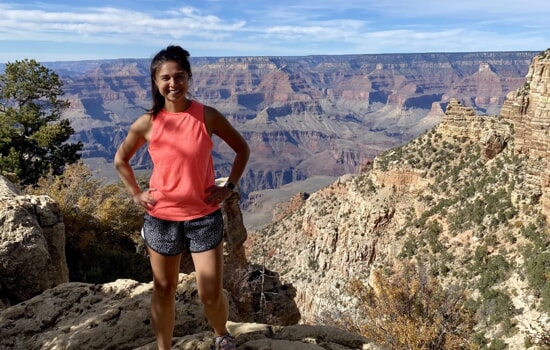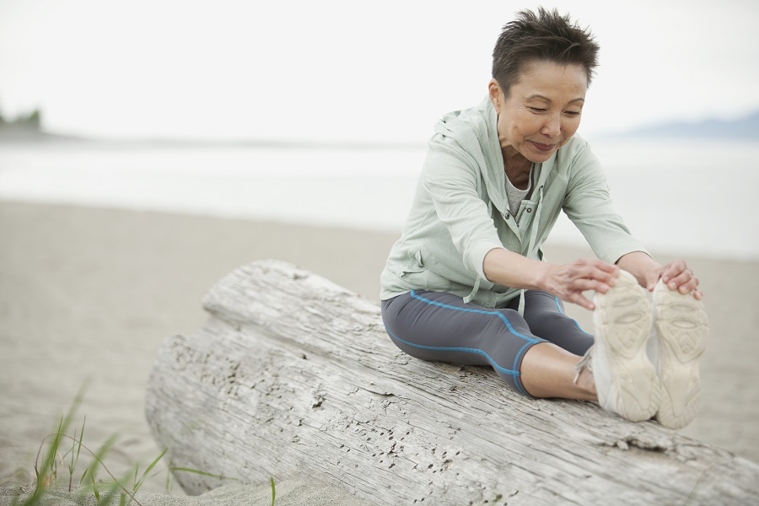Conquering the Grand Canyon Run
Dec 8, 2021

North Rim or South Rim? This question often plagues visitors as they plan a trip to the Grand Canyon in Arizona.
Adventist Health Portland physical therapist Dr. Kara Burbach solved this common dilemma in a uniquely challenging way. She and three friends decided to run from North Rim into the canyon and back up to South Rim.
The adventure began well before dawn on an October morning at about 8,200 feet above sea level. “We were all a little nervous,” Dr. Burbach admits. She and her group donned reflective gear and headlamps as they ran nonstop to the floor of the canyon.
Once at the bottom of the Grand Canyon, the runners refilled their water bottles at a campground and took some time to eat an energy-restoring lunch. Then they began their run up the south side of the canyon.
Months of planning and training
A feat like this didn’t happen on a whim. Dr. Burbach and her friends began training back in March. They took time to plan a time of year when the weather would be moderate and the temperature wouldn’t be too hot.
The team’s running coach helped them prepare gear to safely manage the trip. Their running bags were packed with:
- Layers of clothing
- Food
- Water and filtered water bottleSalt tablets
- Reflective gearHead lamps
The group packed supplies for a run of eight to 10 hours. They ended up bettering that time, reaching South Rim a little over seven hours after their run began. They wanted to be sure to finish their adventure in daylight. Dr. Burbach describes their plan as “book it down, book it up” with a break on the canyon floor.
By the time they reached the other rim, Dr. Burbach and her friends had run 26 miles — equivalent to a marathon at a high elevation with more than 6,200 feet of vertical climb.
Tips for making your own adventure goal
Even if a such a major adventure isn’t your style, Dr. Burbach says anyone can soak up the joy of outdoor time. “Just getting outside is exercise,” she says. “Oregon is so pretty, just go for a walk around the block.”
If that turns into a habit, you might find yourself ready to go farther or push a little harder. “Change it up,” Dr. Burbach says. “Find something you like that brings you a reset.”
If you decide to push yourself a little, Dr. Burbach has some suggestions to keep your adventures safe as well as fun:
- Talk to someone who has done this new adventure so you can get ideas about equipment and how to stay safe.
- Join a group or a class, such as throughREI. This is a great way to get information as well as find a buddy to adventure with.
- Get used to moving around outside and the real world of inclines, downhills, weather and more. “I spent a lot of time in the Gorge this summer training,” Dr. Burbach says.
- Learn what your body needs, including how much food and fluid you need plus what you’re comfortable carrying in a backpack.
- Pack a good first aid kit.REI is again a good source of information.
If your new adventures start to give you more pain than gain, check in with your primary care provider. They may have some healing tips for you, including seeing a physical therapist like Dr. Burbach.
If you’ve been referred to physical therapy and need an appointment, call our rehab team at503-261-6962.


